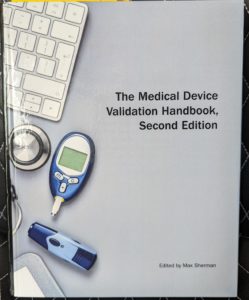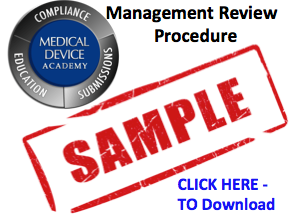This process validation procedure (SYS-014) is designed to meet the requirements of ISO 13485:2016, Clause 7.5.6 and 21 CFR 820.75.
Process Validation Procedure
Medical Device Academy’s process validation procedure is intended to meet the requirements of ISO 13485:2016, Clause 7.5.6 for process validation. The procedure also addresses the requirements of 21 CFR 820.75 in the FDA QSR. Process validation is required whenever there is a process that affects product quality that cannot be 100% inspected or where inspection/testing of the medical device would be destructive. For example, sterilization processes must be validated because the sterility testing required to verify that product is sterile is destructive in nature (i.e. the product can no longer be used and is no longer sterile).
When is the live webinar scheduled for this process validation procedure bundle?
The live webinar is scheduled for Monday, October 14, 2024 @ 10:30 a.m. ET. If you purchased the procedure before October 14, you will receive login information to participate in the live webinar. The webinar will be hosted on Streamyard.com. If you are unable to participate in the live webinar, please send us your questions in advance so that we can be sure to address your questions in the live webinar. You will be able to download the recording from the Dropbox folder after the live webinar and you can watch it as many times as needed.
Scope of the Process Validation Procedure
The process validation procedure does not include software tool validation which is covered under another procedure (SYS-051) or sterilization validation which is covered in three different sterilization validation procedures:
- SYS-031, EO Sterilization Validation
- SYS-043, Steam Sterilization Validation
- SYS-047, Gamma Sterilization Validation
Medical Device Academy also has a detailed sterilization validation protocol that was created specifically for EO Sterilization (i.e. PRO-001, EO Sterilization Protocol)…the page for purchasing this has not been created yet, but please contact us if you want to buy the protocol.
Please note: This product will be delivered to the email address provided in the shopping cart transaction. After the transaction is verified, please check your email for the download.
Process validation steps
There are four steps in the process for process validation–not three. Most people are familiar with the acronyms IQ, OQ, and PQ. However, you need to understand the purpose of each step in the validation process–not just the acronyms. In addition, it is critical to ensure you do not skip the process risk analysis step. Not only is process risk analysis required, but any process hazards identified help you design experiments for evaluating various process risk controls to ensure that the product is consistently produced and conforming. These experiments are the core activities during the operational qualification (OQ) phase of process validation. The process validation procedure describes the IQ, OQ, and PQ phases, but process risk management is primarily found in our risk management procedure (SYS-010). The procedure does, however, state:
“Parameters requiring monitoring (e.g., minimum process capability or Cpk) shall be risk-based using documented acceptance criteria for the risk control of process monitoring.”
The video below provides an overview of each phase of the process validation cycle, and please make sure you watch the video until the end. The links provided in the YouTube video description explain where you can purchase the Medical Device Validation Handbook that Rob Packard contributed as an author.

For your convenience, a copy of the Table of Contents for the validation handbook has been added to our website and you can view it by clicking on the image of the book above. As suggested in the video below, in addition to a process validation procedure, you will also need process validation training.
To view all available procedures click here
To review a sample Medical Device Academy procedure click below:
About the Author

Rob Packard is a regulatory consultant with ~25 years of experience in the medical device, pharmaceutical, and biotechnology industries. He is a graduate of UConn in Chemical Engineering. Rob was a senior manager at several medical device companies—including the President/CEO of a laparoscopic imaging company. His Quality Management System expertise covers all aspects of developing, training, implementing, and maintaining ISO 13485 and ISO 14971 certifications. From 2009 to 2012, he was a lead auditor and instructor for one of the largest Notified Bodies. Rob’s specialty is regulatory submissions for high-risk medical devices, such as implants and drug/device combination products for CE marking applications, Canadian medical device applications, and 510k submissions. The most favorite part of his job is training others. He can be reached via phone at +1.802.258.1881 or by email. You can also follow him on YouTube, LinkedIn, or Instagram.



Could you kindly confirm if validated materials are required for clinical trials or if verified material will be accepted if there will be no change between verification and validation?
The clinical trial is the design validation of the materials. Therefore, only verified materials are required to conduct the design validation. You are permitted to use samples that have not completed all of the design verification and process validation, but this must be with approval from either the FDA and your IRB or just the IRB if the study is an NSR study. If you make any changes to the design after design validation, you may need to repeat your testing.